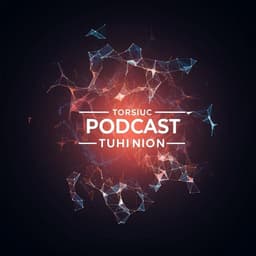
Education
Teacher training in heritage education: good practices for citizenship education
J. M. Cuenca-lópez, M. J. Martín-cáceres, et al.
This study, conducted by José María Cuenca-López, Myriam J. Martín-Cáceres, and Jesús Estepa-Giménez, explores innovative practices in heritage-based citizenship education among future Primary and Secondary teachers, revealing critical insights into the role of emotional and territorial intelligence in teaching.
~3 min • Beginner • English
Introduction
The paper addresses how heritage education can serve as a core element in social sciences teaching to foster active, critical, and participatory citizenship. It situates the study within a socio-critical, holistic, and symbolic-identitary conception of heritage, emphasizing the need to connect educational research with innovation so findings translate into classroom transformation. The authors argue for teacher training that rethinks curricular objectives, content selection, methodological strategies, resources, and evaluation to tackle relevant socio-environmental issues. The research focuses on key curricular questions—why teach heritage, what heritage to teach, how to teach it, and how emotional and territorial intelligence relate to heritage—to inform good practices in citizenship education within the HETEIC project framework.
Literature Review
The article synthesizes prior work that positions heritage as a central objective, content, and resource in social science education (e.g., Feliú & Hernández-Cardona, Fontal & Ibáñez, Prats), advocating transdisciplinary, participatory, and innovative approaches over traditional didactics. Studies underscore the importance of linking research and innovation in teacher education to achieve real educational transformation (Estepa; Estepa & Travé). Research highlights heritage education’s capacity to engage emotional and territorial intelligence and to address identities and citizenship inclusively. Prior literature also documents obstacles in formal heritage education (Fontal & Ibáñez; Lobovikov-Katz) and supports active, participatory methodologies for democratic citizenship education (Fuentes et al.; Darling-Hammond & Bransford; Leenders et al.; Hauver; Molina et al.; Poce et al.). Additional works examine curricular content selection around socially relevant issues, use of technologies such as video games and augmented reality, textbook influences, and comparative curriculum analyses, providing a backdrop for the present study’s analytical categories.
Methodology
Design: Qualitative research within an interpretive paradigm, using a documentary study of materials produced by teachers in initial training. Aim: Assess the impact of heritage education on citizenship education and the role of emotional and territorial intelligence in initial teacher training, aligned with HETEIC project parameters (socio-critical, holistic, symbolic-identity). Sample: 38 end-of-degree projects (TFG—undergraduate; TFM—master’s) from the University of Huelva across five academic years (2015/16–2019/20) in three programs: Degree in Primary Education (GEP), MA in Teacher Training for Secondary Education (MAES, Social Sciences/Geography/History), and MA in Research in Science Teaching and Learning (IEAC, Didactics of Social Sciences). Selection criteria: Projects prepared within HETEIC and addressing the predefined aspects of heritage, emotional intelligence, territorial intelligence, and citizenship education. Instrument: A category table (from HETEIC research) operationalized into five main categories—Why teach? What is taught? How is it taught? Relations between emotional intelligence and heritage? Relations between territorial intelligence and heritage?—each with subcategories and indicators arranged as progression hypotheses from basic to complex to enable systematic analysis.
Key Findings
- Corpus: 38 projects analyzed; 27 master’s (17 IEAC, 10 MAES) and 11 undergraduate (GEP). Heritage-focused work was more prevalent in master’s programs due to specificity of training. - Category I (Why teach?): Predominant aims emphasize training critical citizenship linked to emotions, territory, scientific-cultural literacy, and environmental education, evolving from academic to socio-critical orientations. Some TFGs retained more academic perspectives. Conservationist aims were relatively common (e.g., TFM 17, TFG 24, TFM 32). Scientific-cultural literacy was frequently foregrounded (e.g., TFM 8, 19, 27). Environmental/territorial intelligence aims were rarer (notably TFM 36). Heritage education was also connected to attention to diversity (TFM 7, 18). - Category II (What is taught?): While holistic and symbolic-identitary visions appeared in several works (e.g., TFG 24, 28; TFM 15, 26), many focused on a single typology (historical-artistic) and specific periods (e.g., Roman: TFM 2, 19, 20, 21; Al-Andalus: TFM 3, 27, 37; TFG 12), or on singular monuments/texts (e.g., Alcázar of Seville, TFM 8; Platero y yo, TFG 23). Scientific-technological heritage was least represented (exceptions tied to British mining legacy: TFG 11, 29). Ethnological heritage was more present in local primary-focused proposals (TFG 9, 10, 22, 28). Content innovation often entailed selecting socially relevant issues and integrating conceptual, procedural, and attitudinal content interdisciplinarily (e.g., TFM 2, 3, 4, 14, 16, 18, 20, 21, 26, 27; TFG 30; TFM 36, 37; TFG 38). Contextualization tended to be temporal/spatial; functional and social contextualizations were scarce. - Category III (How is it taught?): Links between research and innovation were evident; some proposals approached action-research (e.g., TFM 21, 26). Heritage was commonly used as objective, content, and resource, but an exclusive resource view persisted in several cases (TFG 10, 22, 28; TFM 19, 27, 37). Activity designs ranged from analytical (descriptive, multi-source) to systemic (argumentation, critical analysis), with more complex designs in IEAC master’s works (TFM 25, 26, 31, 32). ICT use was frequent; notable applications included video games (TFM 6 Dominations for Mesopotamia; TFM 13 Assassin’s Creed Origins for Ancient Egypt). Case TFG 38 examined technology-supported teaching during COVID-19 and highlighted family involvement needs. Other resource analyses included storytelling (TFM 31) and textbooks (TFM 34), the latter reflecting traditional, monumental heritage emphases and curricular/legal constraints; TFM 33 compared curricula across autonomous communities; TFM 35 compared Spain–Colombia contexts. - Category IV (Emotional intelligence and heritage): Emotions were treated as key for citizenship training through heritage (e.g., TFM 7, 25; TFG 30). Interculturality and identity multiplicity appeared (TFM 14, 16), but most works focused on empathy and social responsibility more than on deep engagement with diverse cultural identities (e.g., TFG 9, 10, 11, 22, 24). Few addressed the social dimension of learning linked to emotions; analyses more often targeted cognitive aspects via students’ conceptions (TFM 14, 15, 17, 25). Emotional skills were usually tied to interpersonal intelligence rather than adaptive problem-solving in real socio-environmental contexts (notable exception: TFM 36). - Category V (Territorial intelligence and heritage): Least represented category. Clear linkage appeared in TFM 36 (sustainable development/ecological perspective), but no cases evidenced post-development/degrowth approaches. Landscape was addressed locally (e.g., TFM 32), often with conservationist rather than integrated socio-natural cultural visions. Social (collective) citizenship perspectives predominated; interterritoriality and global citizenship connections were limited. Overall, the HETEIC framework fostered projects emphasizing innovative content selection, interactive methodologies, and diverse resources, especially videogames, to support heritage-based citizenship education.
Discussion
Findings demonstrate that connecting educational research with innovation in initial teacher training encourages more socio-critical, identity-aware, and methodologically active approaches to heritage education aligned with citizenship formation. While many projects embraced holistic and symbolic-identitary understandings and integrated ICT-rich, interactive strategies, persistent tendencies remained: privileging historical-artistic heritage, using heritage primarily as a resource, limiting contextualization to time/space, and focusing on empathy without fully engaging identity multiplicity or the social dimension of emotional learning. Territorial intelligence was notably underdeveloped, with few proposals engaging with landscape as socio-natural heritage, global citizenship, or interterritoriality. These results address the study’s guiding questions by mapping current strengths (e.g., innovative content, emotional engagement, complex activities in research-oriented programs) and gaps (e.g., limited functional/social contextualization, weak territorial intelligence, traditional textbook influences), indicating clear directions for enhancing teacher preparation for citizenship-oriented heritage education.
Conclusion
The study underscores the value of linking educational research and innovation to shape initial teacher training in heritage education for citizenship. The HETEIC project’s impact is evident in 38 end-of-degree projects across three programs, promoting holistic and symbolic-identitary visions, interactive methodologies, and diverse resources (notably videogames) for heritage-based citizenship learning. The work highlights the potential of integrating emotional and territorial intelligence; however, it calls for deeper implementation of territorial intelligence through shared heritage management and broader engagement with identity multiplicity and richer functional/social contextualizations of heritage. Future efforts should expand research and practice on interterritoriality, global citizenship, and socio-environmental problem-solving within heritage education.
Limitations
The sample is local and small, limiting generalizability. Additionally, the documentary nature of the sources (student end-of-degree projects) may reflect program-specific emphases and constraints; data sets are not publicly available due to intellectual property rights of the authors of the analyzed works.
Related Publications
Explore these studies to deepen your understanding of the subject.







